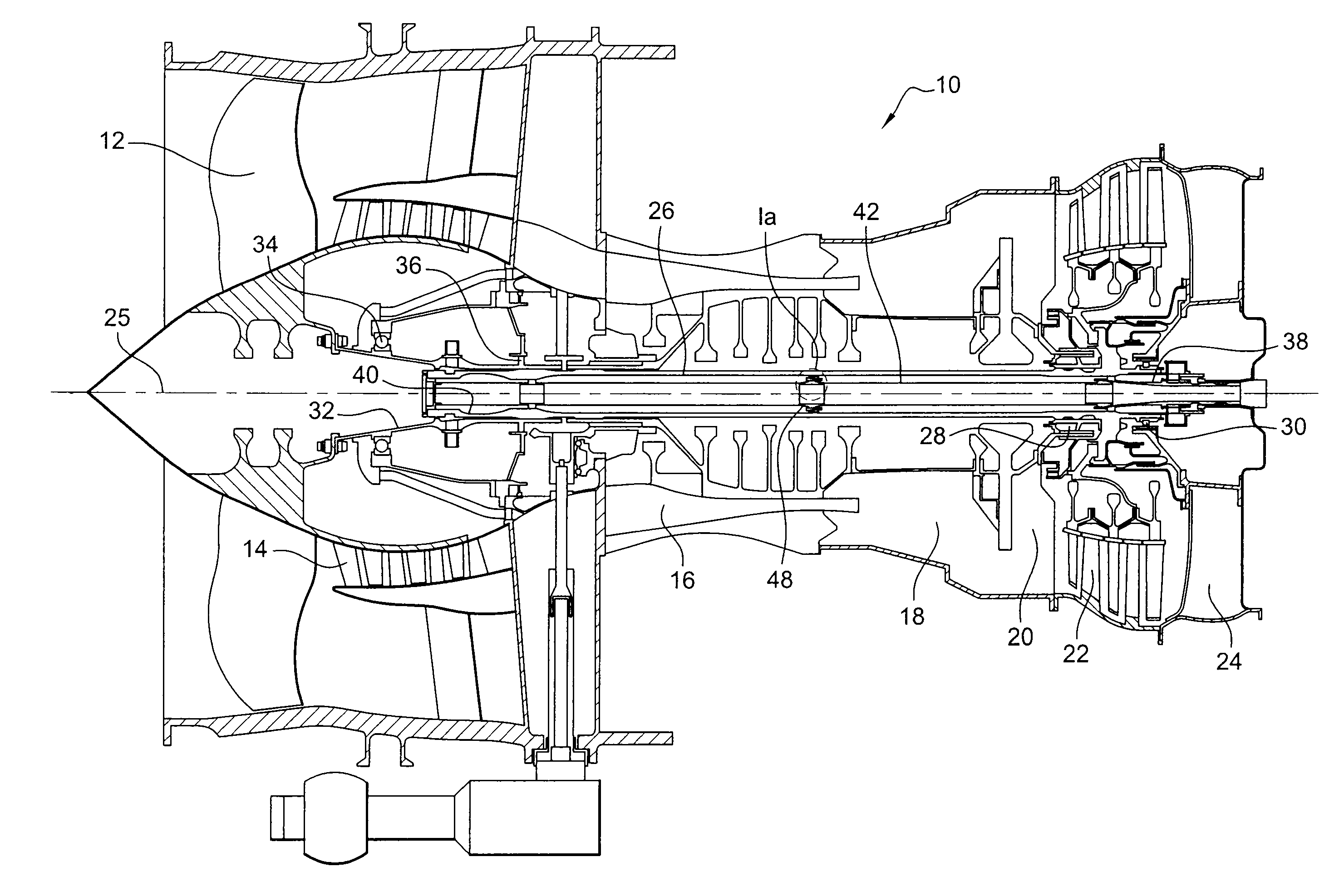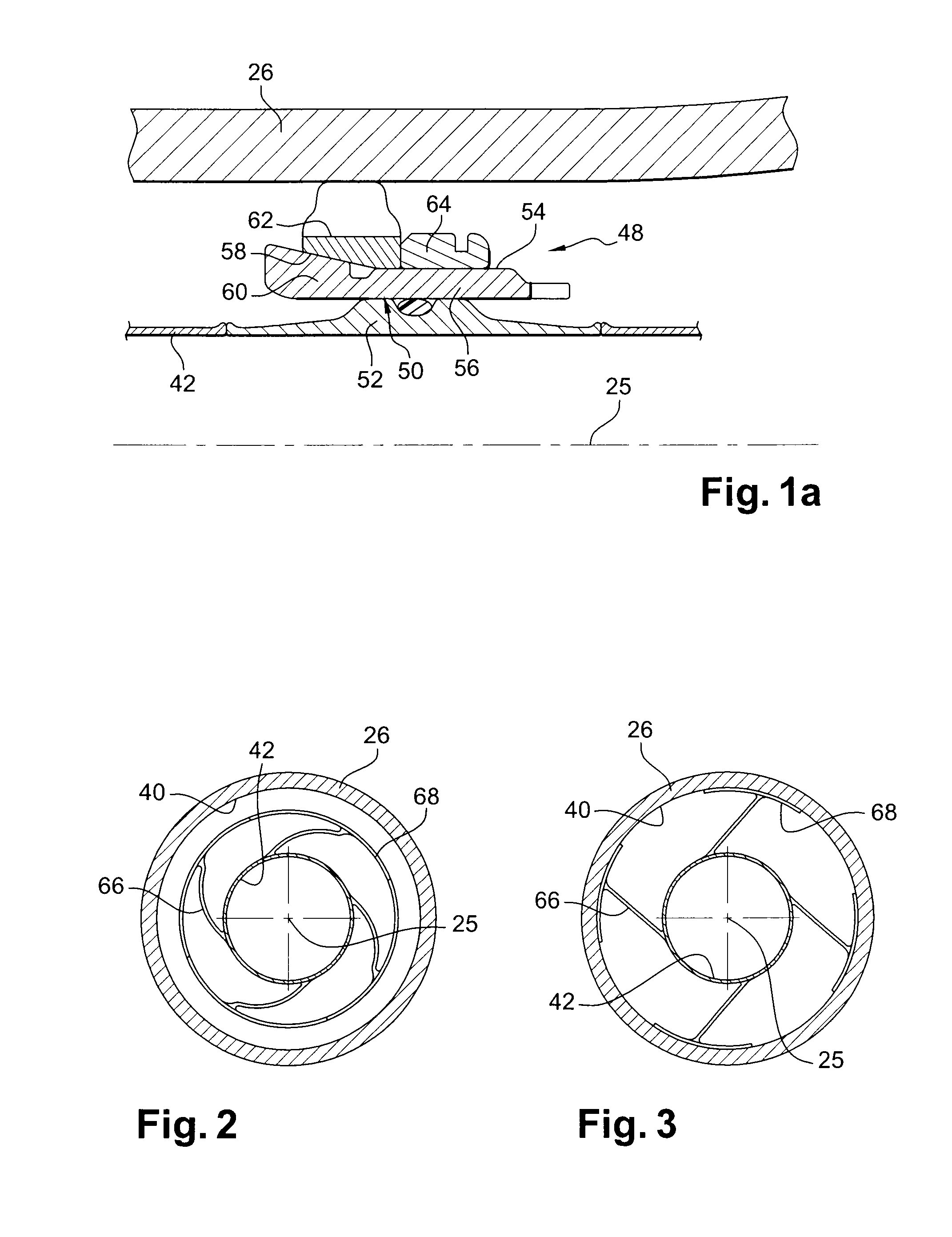Centering a part inside a shaft
a technology for centering parts and shafts, which is applied in the direction of bearing units, rigid supports of bearing units, forging/pressing/hammering apparatus, etc., can solve the problems of affecting the working efficiency of the machine, affecting the quality of the machine, and requiring special tooling. it is relatively expensive, and the positioning of rings is wrong. , to achieve the effect of simple, effective and inexpensiv
- Summary
- Abstract
- Description
- Claims
- Application Information
AI Technical Summary
Benefits of technology
Problems solved by technology
Method used
Image
Examples
first embodiment
[0059]In the invention, shown in FIGS. 2 and 3, the deformable means are rods 66 made of shape-memory material capable of presenting a single shape material effect, such as a for example an alloy of nickel and titanium, sometimes known as nitinol.
[0060]Each rod 66 is substantially radial or obliquely inclined relative to a radius, and has a radially inner end fastened to the outside surface of the tube 42, e.g. by welding or brazing, and a radially outer end carrying a bearing shoe 68 constituted by an annular sector of a common material, such as steel, for the purpose of being pressed against the inside surface 40 of the shaft 26, the shoe 68 being fastened to the rod 66 likewise by welding, brazing, or the like.
[0061]In the retracted configuration shown in FIG. 2, the radially outer ends of the rods 66 are curved inwards so that the shoes 68 are located at a short distance from the tube 42 adjacent to one another, thereby forming a ring that is substantially continuous.
[0062]In th...
second embodiment
[0070]FIGS. 4 and 5 show the invention in which the deformable means of the centering device comprise a ring 70 made of a shape-memory material that is capable of presenting a double shape-memory effect, such as an alloy of the CuAlNi, CuZnAl, CuAlBe, NiTi, or indeed NiTiNb type, so as to make it possible both to deploy and to retract the device by heating or cooling it.
[0071]In order to implement the double shape-memory effect, the ring 70 is initially subjected to a training stage comprising a series of thermomechanical cycles in which it is shaped in alternation to have a circular shape, at a temperature below the transition temperature Tt of the shape-memory material to the austenitic phase, such that this material is then in its martensitic phase, and into an oval shape by lengthening the ring in a plane 72 containing the axis 25 of the shaft 26, at a temperature higher than the transition temperature Tt of the shape-memory material, such that the material is in its austenitic ...
third embodiment
[0082]In a third embodiment shown in FIGS. 6 and 7, the deformable means comprise plates 84 of shape-memory material suitable for presenting a double shape-memory effect, which plates are interposed between a ring 86 and bearing shoes 88.
[0083]The ring 86, e.g. made of a common material such as steel, includes hollow portions or cups 90 formed in its outside surface and regularly distributed around the axis 25 of the ring, there being four of these cups 90, for example.
[0084]By way of example, each cup 90 is frustoconical in shape with a flat bottom, and it designed to house a bearing shoe 88 of substantially complementary shape, e.g. made of a material analogous to that of the ring 86, together with a plate 84 of shape-memory material that is interposed between the bearing shoe 88 and the bottom of the cup 90 and that is configured to push the bearing shoe 88 radially outwards on being subjected to a temperature higher than the transition temperature Tt of the shape-memory material...
PUM
| Property | Measurement | Unit |
|---|---|---|
| transition temperature Tt | aaaaa | aaaaa |
| transition temperature Tt | aaaaa | aaaaa |
| diameter | aaaaa | aaaaa |
Abstract
Description
Claims
Application Information
 Login to View More
Login to View More - R&D
- Intellectual Property
- Life Sciences
- Materials
- Tech Scout
- Unparalleled Data Quality
- Higher Quality Content
- 60% Fewer Hallucinations
Browse by: Latest US Patents, China's latest patents, Technical Efficacy Thesaurus, Application Domain, Technology Topic, Popular Technical Reports.
© 2025 PatSnap. All rights reserved.Legal|Privacy policy|Modern Slavery Act Transparency Statement|Sitemap|About US| Contact US: help@patsnap.com



